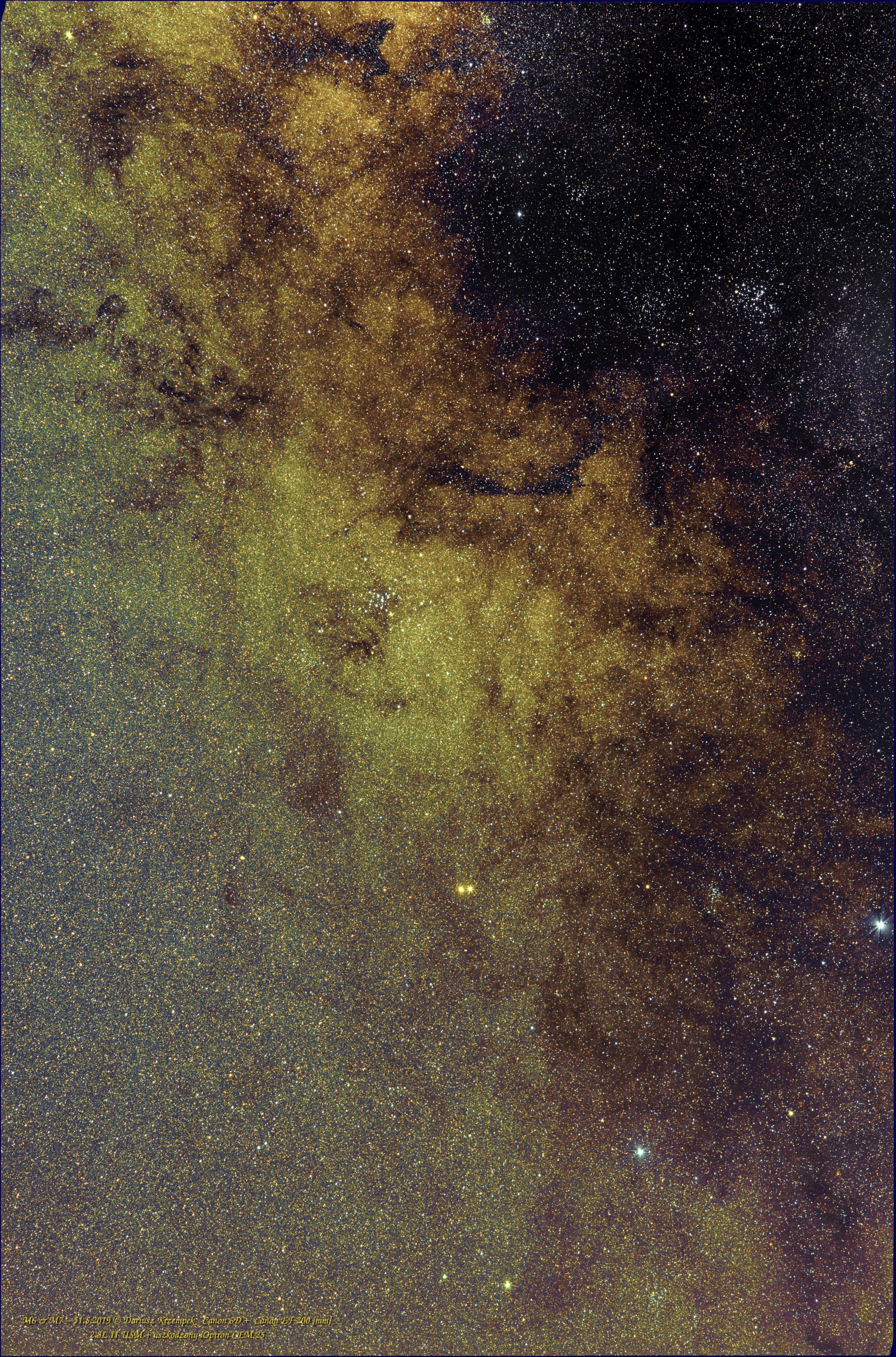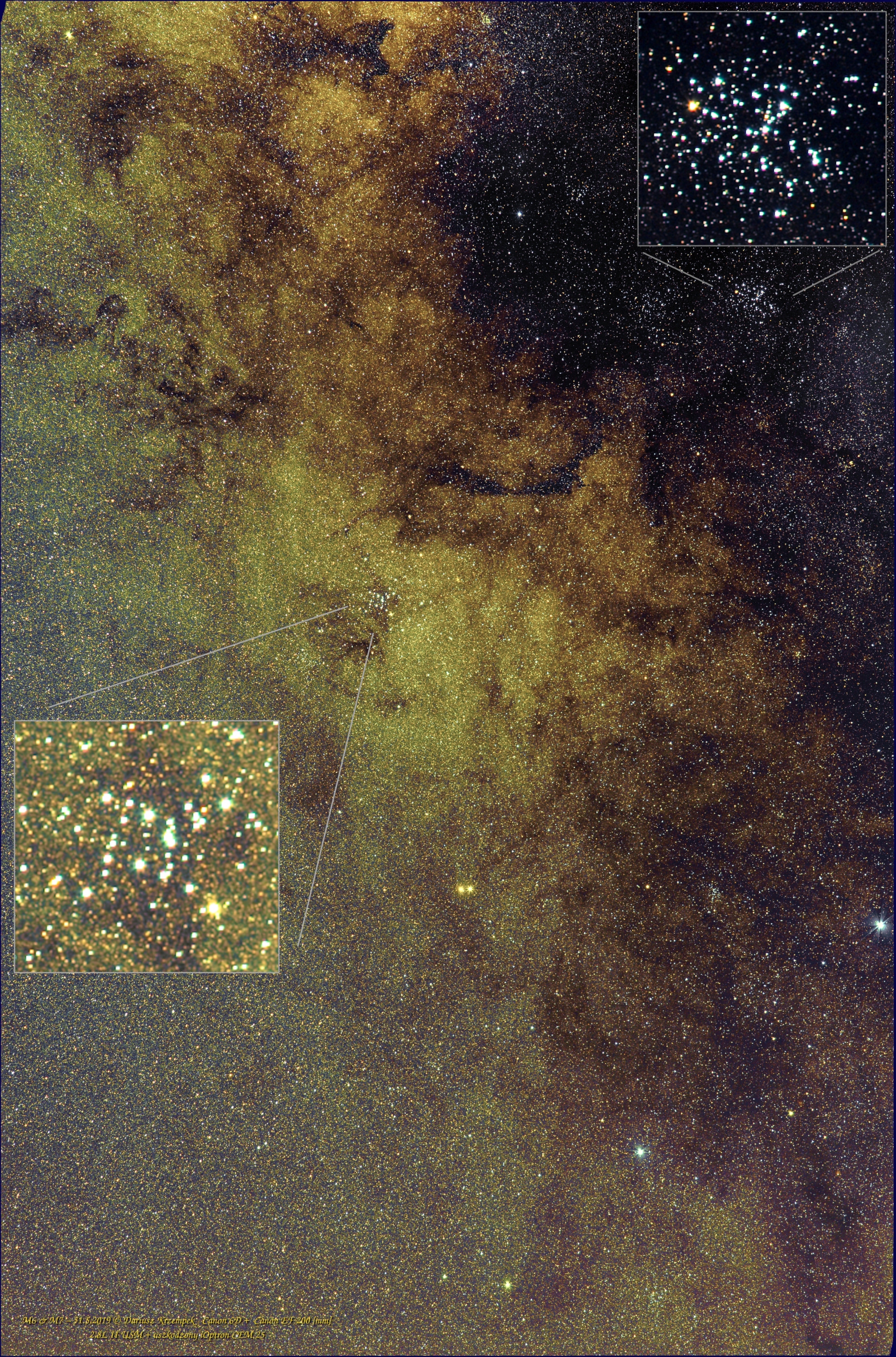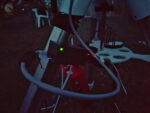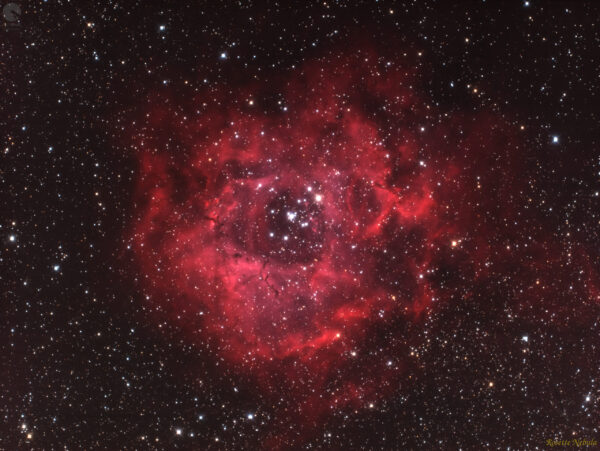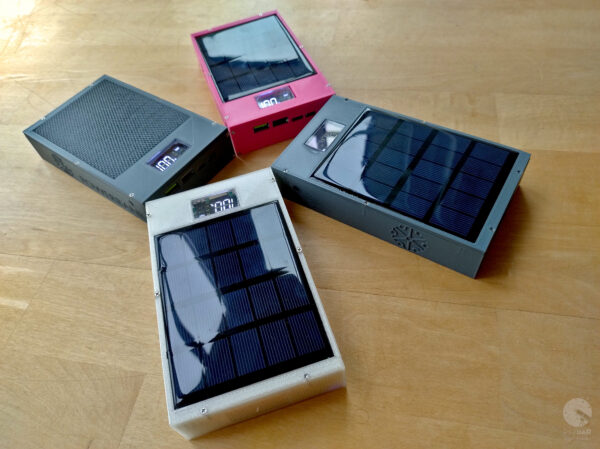The Butterfly Cluster (M6 and as NGC 6405) – in the picture zoomed above – is an open cluster of stars in the southern
constellation of Scorpius. Its name derives from the vague resemblance of its shape to a butterfly.
Estimates of distance 1,590 light-years, giving it a spatial dimension of some 12 light years. Modern measurements show its total visual brightness to be magnitude 4.2. The cluster is estimated to be 94.2 million years old.
Source:
https://en.wikipedia.org/wiki/Butterfly_Cluster
The Ptolemy Cluster (M7 and as NGC 6475) – in the picture zoomed below – is an open cluster of stars in the constellation of Scorpius. The cluster is easily detectable with the naked eye, close to the “stinger” of Scorpius. With a declination of −34.8°, it is the southernmost Messier object.
M7 has been known since antiquity; it was first recorded by the 2nd-century Greek-Roman astronomer Ptolemy, who described it as a nebula in 130 AD.
Telescopic observations of the cluster reveal about 80 stars within a field of view of 1.3° across. At the cluster’s estimated distance of 980 light years this corresponds to an actual diameter of 25 light years. The tidal radius of the cluster is 40.1 ly (12.3 pc) and it has a combined mass of about 735 times the mass of the Sun. The age of the cluster is around 200 million years while the brightest member star is of magnitude 5.6. In terms of composition, the cluster contains a similar abundance of elements other than hydrogen and helium as the Sun.
Source:
https://en.wikipedia.org/wiki/Messier_7
Photos taken on 2019.
- Composition: Astro Pixel Processor,
- Processing: GIMP v2.10.12 + plug-ins (Linux),
- Lights: 62 x 60[s] ISO 800,
- Flats: 60 ISO 800,
- Darks: 21 ISO 800,
- Bias: 20 ISO 800


